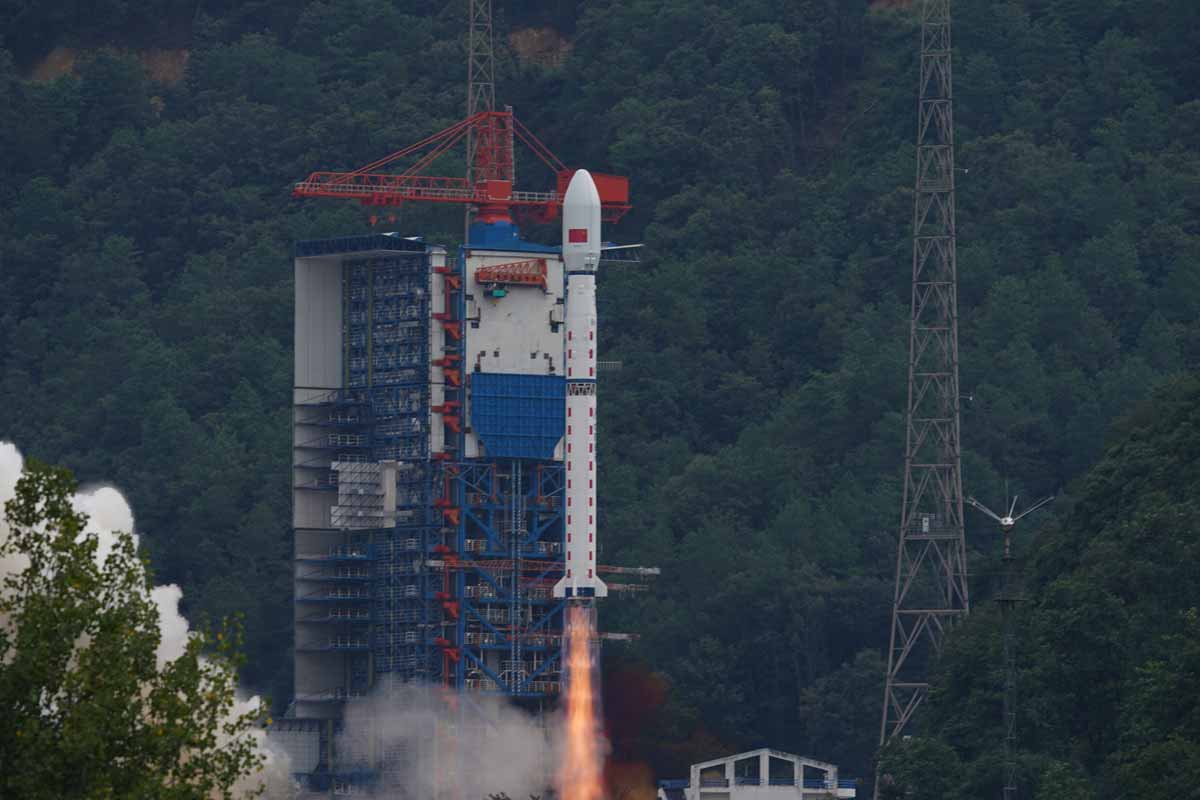Nuclear technology sits at the center of a story that’s equal parts promise and unease. A massive new fusion site in China just came into focus from space. It looks ambitious, almost defiant, and it changes the temperature of the conversation. Energy dreams meet national strategy here, and the stakes feel very real.
Eyes in the sky
Early in 2025, American satellites caught something startling over Mianyang. The images show a sprawling fusion research site with a striking star layout. Four huge arms reach inward toward a central chamber that dominates the footprint. Engineers designed those arms to host banks of high-power lasers. They converge on a tiny target, looking to spark a brief sun on Earth. The central chamber appears oversized, even next to America’s National Ignition Facility. Analysts estimate a footprint about half again as large for that core. That scale hints at raw power and an appetite for breakthroughs.
It also telegraphs comfort with risk and long, expensive build cycles. The location matters, too, given Mianyang’s web of defense institutes. You can almost hear the hum of committees and clearances. This project folds into China’s wider playbook for nuclear technology. Cranes orbit the perimeter like patient birds. You can imagine the supply chain clicking like clockwork behind the fence.
Nuclear technology
Step inside that geometry, at least in your mind. The star shape isn’t a flourish. It channels beams, aligns equipment, and gives engineers clean access to the heart. Inside that heart sits a target where fuel gets squeezed to wild pressures. Every microsecond counts, and every jitter steals energy from the shot. Scale helps here, as larger optics can tame stray noise and heat. Comparisons to the National Ignition Facility come up in every briefing. Observers say the main chamber looks about fifty percent larger by volume.
That kind of headroom buys room for thicker shielding and beefier hardware. It also signals budgets that don’t blink at custom parts. Physicists read the layout as a bid for steadier, brighter implosions. That’s how you chase more reliable ignition, shot after shot. It’s engineering as a wager on the next leap. And it plays out in a city steeped in defense research. Money buys time, but patience builds mastery. This place feels built for both.
Fusion’s bright promisean shadow
Fusion has always carried a double heartbeat. One beat is clean power from hydrogen, with scant long-lived waste. The other is weapons science, sharpened without old-style test blasts. In 2022, NIF briefly crossed the holy line and made net energy. That shot changed expectations, even if the system was not a power plant. China’s build looks like a bet on that next chapter. Inertial confinement labs mirror the machinery used to steward arsenals.
They recreate searing pressures, watching materials behave under that stress. That knowledge feeds warhead modeling without lighting a live device. It can thread the needle around test bans and verification regimes. This is where nuclear technology stops being abstract policy chatter. It becomes hardware, schedules, training pipelines, and pressure on neighbors. Everyone feels it when the lights dim or the radar blips. No one wants accidental signals to spark misreads in command centers. That’s the tightrope everyone walks here.
Strategy woven into steel and glass
The site reads like a message as much as a machine. Beijing wants fewer chokepoints and more homegrown leverage in sensitive fields. Energy is one of them, and so is defense science. Add space surveillance and advanced optics, and you get a broader pattern. Investment flows toward platforms that compress time, compress risk, and compress uncertainty. In that light, partnerships feel harder, and guardrails feel urgent. Scientists want to collaborate and publish, and grab coffee like always.
Agencies want audit trails, export controls, and smaller attack surfaces. Both instincts make sense, and both collide under pressure. When tensions rise, research programs get folded into grand strategy. That’s where nuclear technology becomes a litmus test for trust. If everyone feels watched, fewer hands reach across the table. If everyone feels shortchanged, deals dry up in a hurry. Trust is slow, and suspicion is fast. History keeps proof on file.
What comes next
So where does this leave the rest of us? Western leaders can clamp down or try to shape the field. Both paths carry costs, and both miss things in the fog. Tighter walls might slow theft, yet speed self-reliance abroad. More open doors might build trust, yet leak sensitive techniques. Maybe the better move is measured transparency with teeth. Share milestones, publish physics, and protect tooling that gives away the playbook. Back that with inspections, timelines, and consequences everyone understands. Energy breakthroughs deserve room, and so do safety valves.
We should say that out loud, often. At the same time, treat nuclear technology as more than a buzzword. It governs power grids, climate goals, and how wars get deterred. If we want the upside, we need guardrails that real people can live with. That means smarter export rules, deeper peer review, and faster red-teaming. It also means naming where nuclear technology crosses into weapons stewardship. Clear lines won’t fix everything, yet they can keep faith from draining away. It also means admitting when pride gets in the way. We can build guardrails without slamming every door shut.
